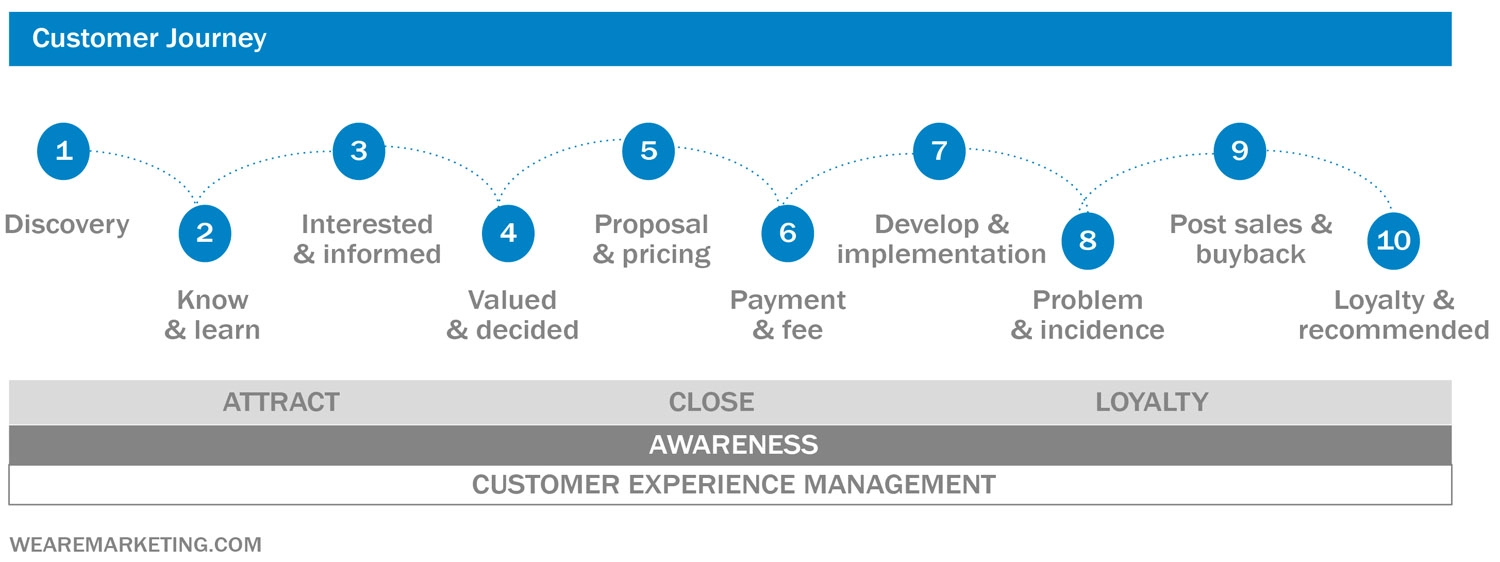The Who, What and ‘Wow’ of Customer Experience Management
‘The customer journey.’ ‘Touch points.’ ‘The moment of truth.’ ‘The ‘wow!’ effect.’ These fashionable management terms relate to one of the least understood and most complex business areas: the customer experience strategy (CES).
A well-designed and managed CES is the key to differentiating your company. If one listens to what customers are saying, and constantly measure and monitor their experiences, companies will be prepared to act whenever a buyer persona— i.e. a behavioural archetype representing a particular group of customers—expresses a new demand.
For example, a US supermarket, whose customer-experience indicators discovered that some pet owners couldn’t shop on weekends, introduced a doggie daycare service, thus meeting a need that had not previously been considered or analysed.
A CES must add value in real and innovative ways at every stage of the customer lifecycle. As well as the traditional customer-lifecycle stages—reach, acquisition, conversion, retention and loyalty—digitalisation has added new stages. Customers now begin their journey by surfing the Internet, searching for information and finding solutions to problems they didn’t know they had. A company’s new challenge is to incorporate analysis of these new stages and points of contact into their CES so that they can influence the buyer’s experience from the outset.

A CES must add value in real and innovative ways at every stage of the customer lifecycle.
Consistency is the word
A poorly-designed CES not only distorts the customer’s perception of a product, brand or company, it can also misalign the company’s own strategy. The customer experience should be designed in line with the brand promise as set out in the company’s mission and promise to stakeholders. For example, a brand that is strongly associated with environmental friendliness must act accordingly in all areas of the business, from containers and packaging to its waste-management practices.
That said, the ideal customer experience cannot always be achieved despite the best of intentions. The challenge is to reconcile three distinct issues: what the company desires for its customers, what it is able to deliver, and how the customer experiences it. Consider the case of Spanish railway operator RENFE. After finding that a particular buyer persona wanted the guarantee of a peaceful journey, RENFE introduced quiet cars in some trains. The announcement of this new service generated sky-high expectations that RENFE was unfortunately unable to meet. It then became harder to convince customers that its quiet-car journey would ever be as peaceful as initially promised.
The company had created a material solution. But it failed to manage, monitor and measure the real quiet-car experience to find out whether travellers were getting what they had been promised. The lesson is never offer an experience that you cannot deliver because the resulting ‘moments of pain’ can be hard to heal.
- Action points for managers
- Segment your target market creatively. Define customer personas not just by age and socio-economic level but, for instance, by behaviour, conduct and emotions. This will help you devise innovative marketing ideas.
- Analyse new points of contact. A company should constantly be creating new opportunities for interaction with customers.
- Innovate in technology. Stay abreast of new and improved customer-interaction formats.
*This article was co-authored by José María Machuca, Manager of Digital Customer Experience at We Are Marketing (WAM) and Manager of IE Customer Experience Management Club